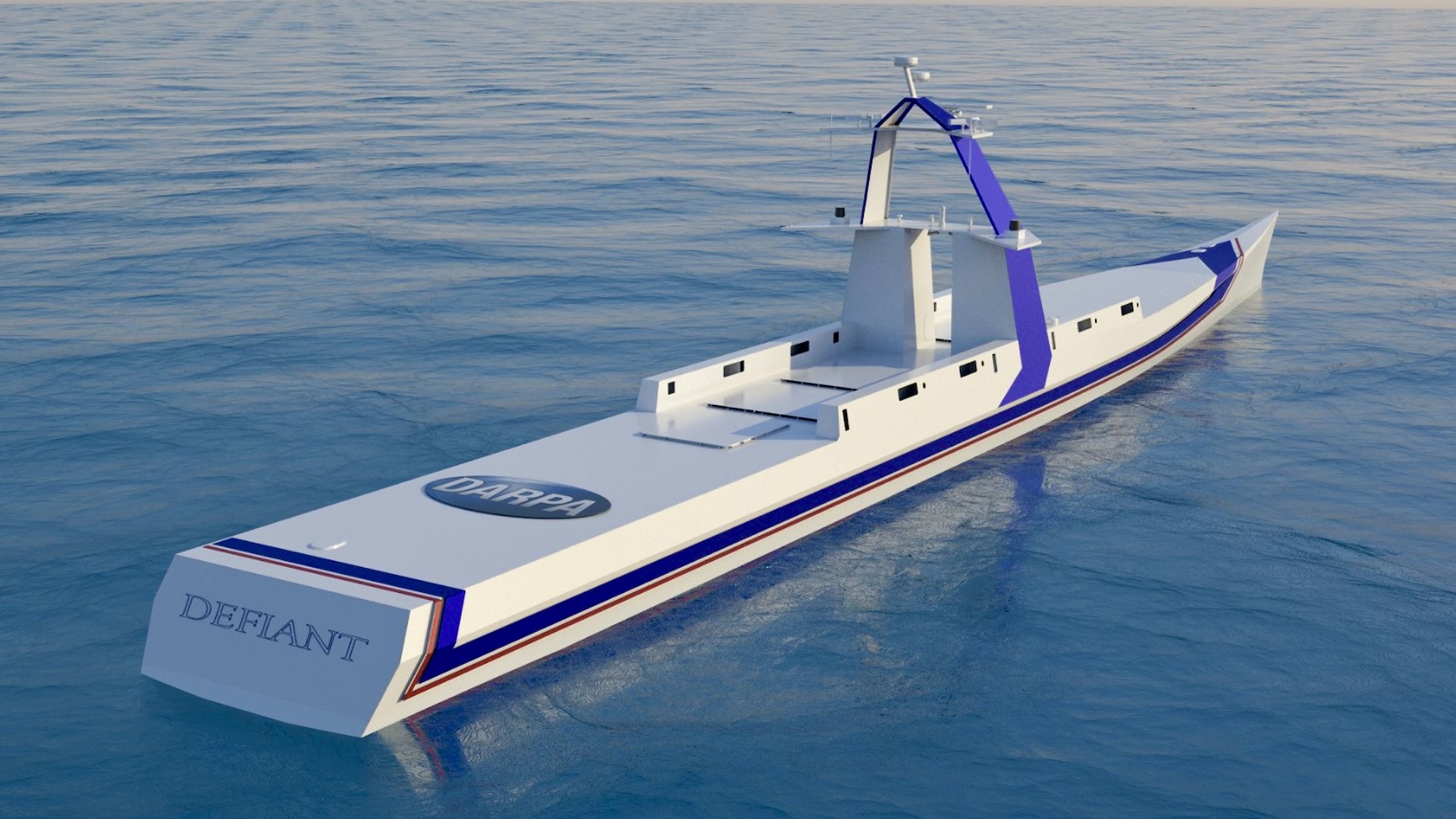Plans to test a new uncrewed surface vessel are making waves, with the company heading the project targeting the end of this year to put its demonstrator in the water. Serco Inc.’s Defiant testbed has been designed from the ground up with the knowledge that there will never be a human onboard while it’s at sea. Conceived as being capable of operating autonomously for months to years with minimal maintenance, the vessel is already being eyed by the Navy as a path to fielding a fleet of missile-laden drone boats in the future.
Defiant is being procured under the Defense Advanced Research Projects Agency’s (DARPA) No Manning Required Ship (NOMARS) program, which aims to field a new medium uncrewed surface vessel (MUSV) prototype. The NOMARS program was launched in 2020, and Serco’s involvement in it stretches back to that time.
In 2022, the company was awarded a $68.5 million total-value contract to build, test, and demonstrate its solution as the prime contractor. This is all prior to the start of more rigorous at-sea testing, which a representative for Serco confirmed to The War Zone on the floor of the Navy League’s Sea Air Space symposium this week is scheduled to start in January 2025.

Detailed specifications on Defiant‘s overall proportions have not been released. However, we know that it is a 210-metric ton, medium-sized USV design, per DARPA.
In executing what DARPA calls a “clean-sheet ship design process” — i.e., in designing a vessel meant to be totally uncrewed at sea, including during underway replenishment events, and requiring limited maintenance over long stretches of time — Serco, along with various industry partners, has explored multiple ways in which the space saved from removing human operators could be utilized. The demonstrator itself is being built by the Washington state-based shipbuilder Nichols Brothers Boat Builders, for which it was awarded a contract in October 2023.
Although specific mission sets for the testbed have not been specified by DARPA, it does note that it should be able to carry “significant payload at tactically useful ranges.”
At the front of a model of Defiant displayed at Sea Air Space 2024, for example, there is an angled missile launch system, which is likely what BAE Systems is currently marketing as the Adaptable Deck Launching System, or ADL. A deck-mounted angled launcher, ADL offers vessels with limited below-deck space Mark 41 vertical launch system (VLS)-like capability. The trade-off of ADL is the significant surface-area it takes up on deck for the launch cells is provides; however, given that Defiant has been optimized for maximizing available deck space by removing considerations associated with crews, this is a logical pairing.e.
ADL is a modular design and is currently offered in two-, four-, and eight-cell configurations; with the four-tube version shown on the Defiant model. You can read all about ADL in our previous profile on it linked her
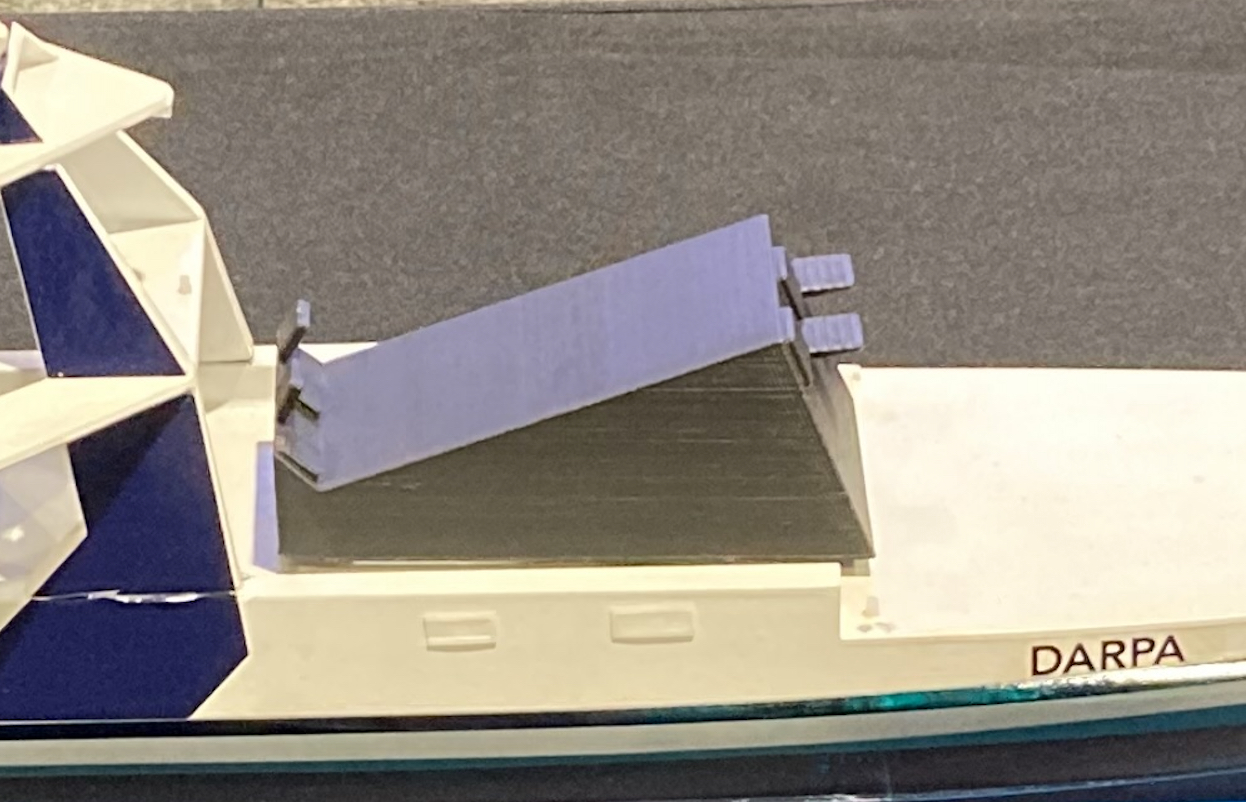
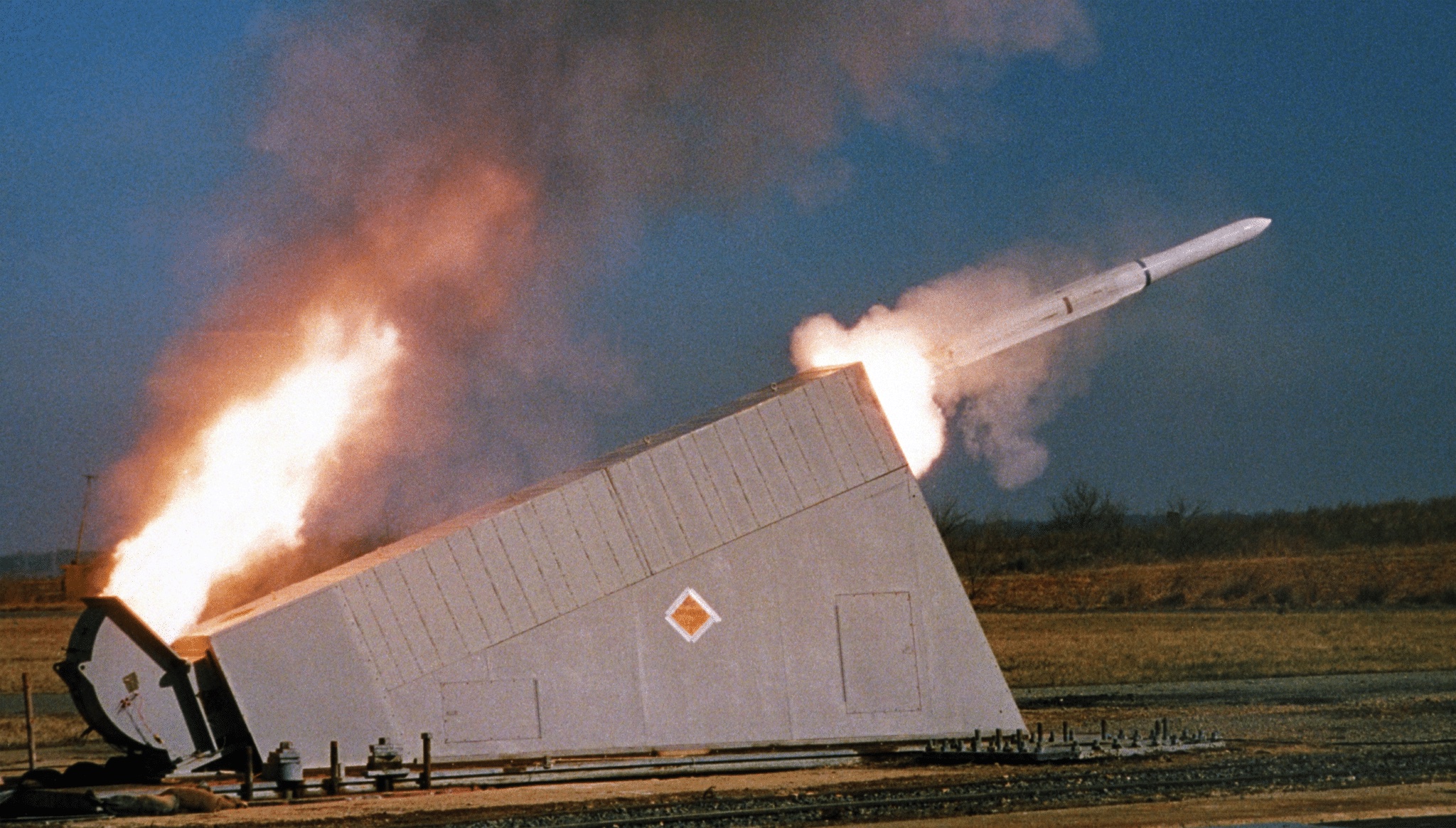
Utilizing ADL’s Mk 41-derived design means that Defiant would be able to launch a wide variety of weapons, including surface-to-air missiles, anti-submarine rockets, and anti-ship and land-attack missiles that are all in the Navy’s current inventory.
It should be noted that Serco has already completed some initial design work on a larger derivative of Defiant called Dauntless. A model of that USV shown on the floor of Sea Air Space depict it sporting four, four-tube ADLS, for a total of 16 cells.

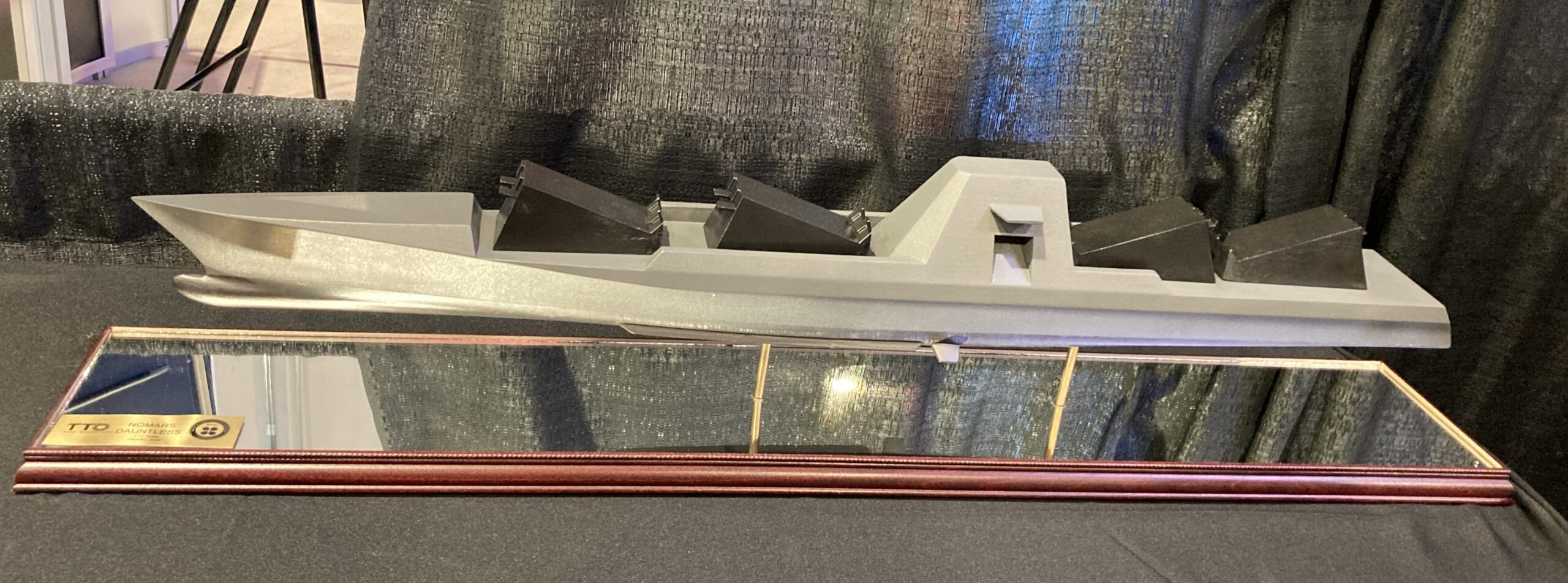
In addition to its missile carrying capability, Serco envisions Defiant carrying other payloads, too. To the back of the model, we see it sporting a shipping container, which could be used to store all-manner of assets; including containerized launchers for drones, electronic warfare and intelligence-gathering systems, communications suites, towed sonars, and more.

In previous concept videos for its MUSV, Serco has depicted Defiant undertaking humanitarian relief operations; delivering food and aid shipments to strategic locations.
There is also potential for it to do logistics work in a military context, too; DARPA has a separate program on this called Sea Train, which you can read more about here.
In terms of propulsion, Defiant is set to feature distributed hybrid power generation, podded propulsors, and high-capacity batteries, per DARPA’s requirements for improving “hydrodynamic efficiency via hull optimization.”
As a specific requirement of the NOMARS program, and in order to achieve high levels of reliability, Defiant will adopt DARPA’s “graceful degradation” concept. This allows for “individual equipment to fail over time by having enough system-level redundancy to meet full system requirements at speeds of at least 15 knots after one year at sea.”
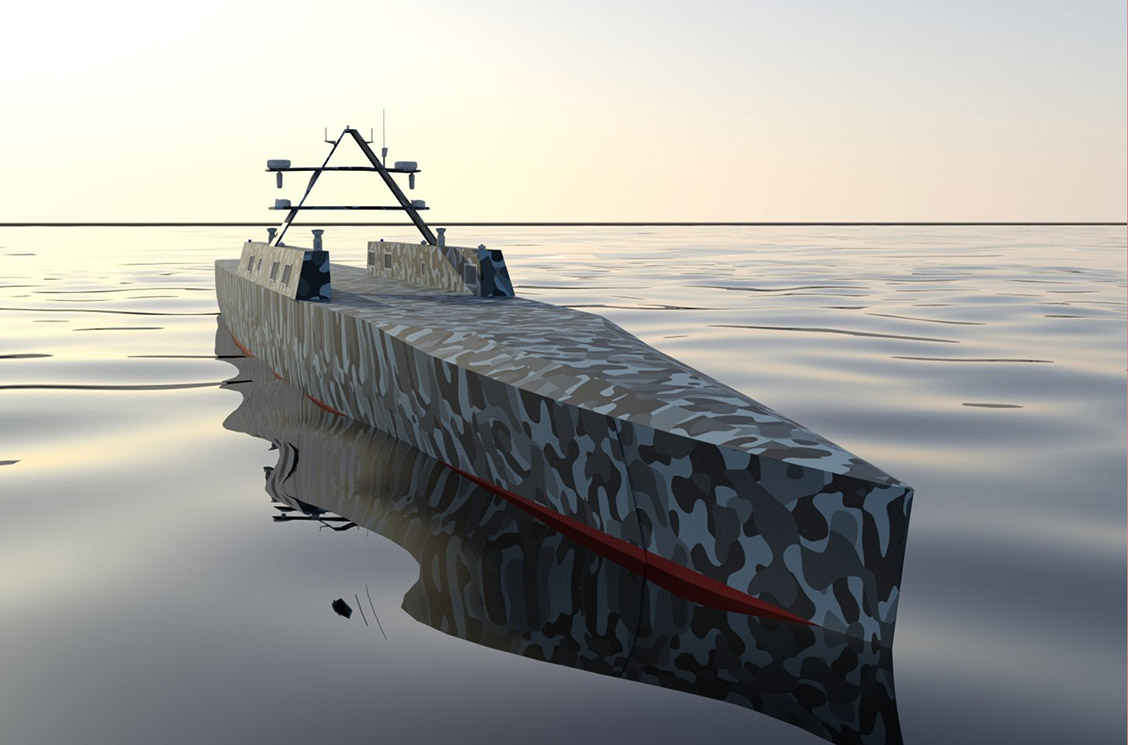
Overall, the demonstrator’s design and low-maintenance costs — maintenance on it can be performed at small yacht yards, for example — is meant to significantly decrease the Navy’s cost per mission hour, Naval News reports.
Serco’s representative confirmed that the price-tag for the demonstrator, not including any add-on mission systems, is approximately $25 million.
Following the completion of at-sea trials next year, which DARPA has previously noted will last three-months in total, the demonstrator will most likely pass to the Navy. To date, several of DARPA’s experimental medium-sized USV programs have been transitioned to Navy in the forms of Sea Hunter and Seahawk. Those MUSVs are now part of a wider USV fleet which the Navy has been experimenting with.

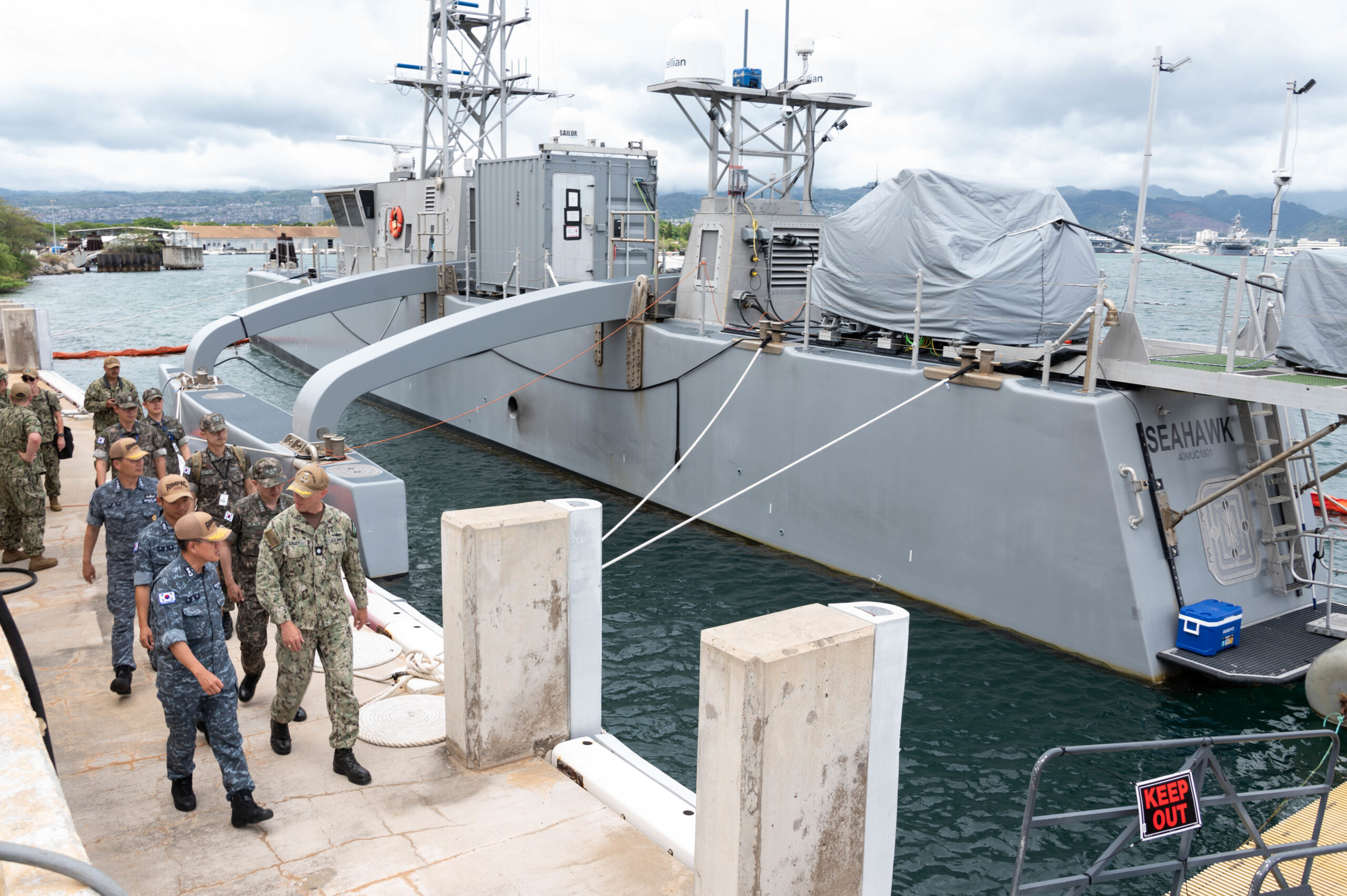
In the case of Defiant, the Department of Defense has been vocal about the potential benefits it could offer the Navy going forward, particularly in terms of adding additional strike platforms working in conjunction with crewed assets.
In the DoD’s Fiscal Year 2025 budget request, it specifically states that the “capability will enable disaggregated persistent USVs, allowing the surface fleet to credibly threaten peer adversaries and negate their investments in high-cost weapon systems designed to counter large naval targets such as aircraft carriers.” Success with the NOMARS program would create “a pathway to allow a distributed lethality concept to become viable: small ships, in large numbers, each of which is individually low-cost and low-value, but in aggregate presents a significant deterrent [to adversaries].”
In addition, there are also advantages in terms of the ease with which the design could be constructed in large numbers in order to fulfill that need. Construction of the design does not need to be limited to established shipyards; as Serco’s representative noted on the Sea Air Space 2024 floor, it could conceivably be built at locations like railworks, if needed. Having access to an easily producible MUSV would be a huge boost to the Navy, particularly amid serious concerns regarding the rate of U.S. ship production, notably in relation to adversaries like China. Just the ability to quickly produce relatively capable vehicles and weapons, especially during a crisis, at relatively low cost, is becoming a major advantage the Navy is seeking to obtain across domains.
We will be keeping our eyes peeled for when Defiant takes to the water for the first time later this year.
Contact the author: oliver@thewarzone.com
